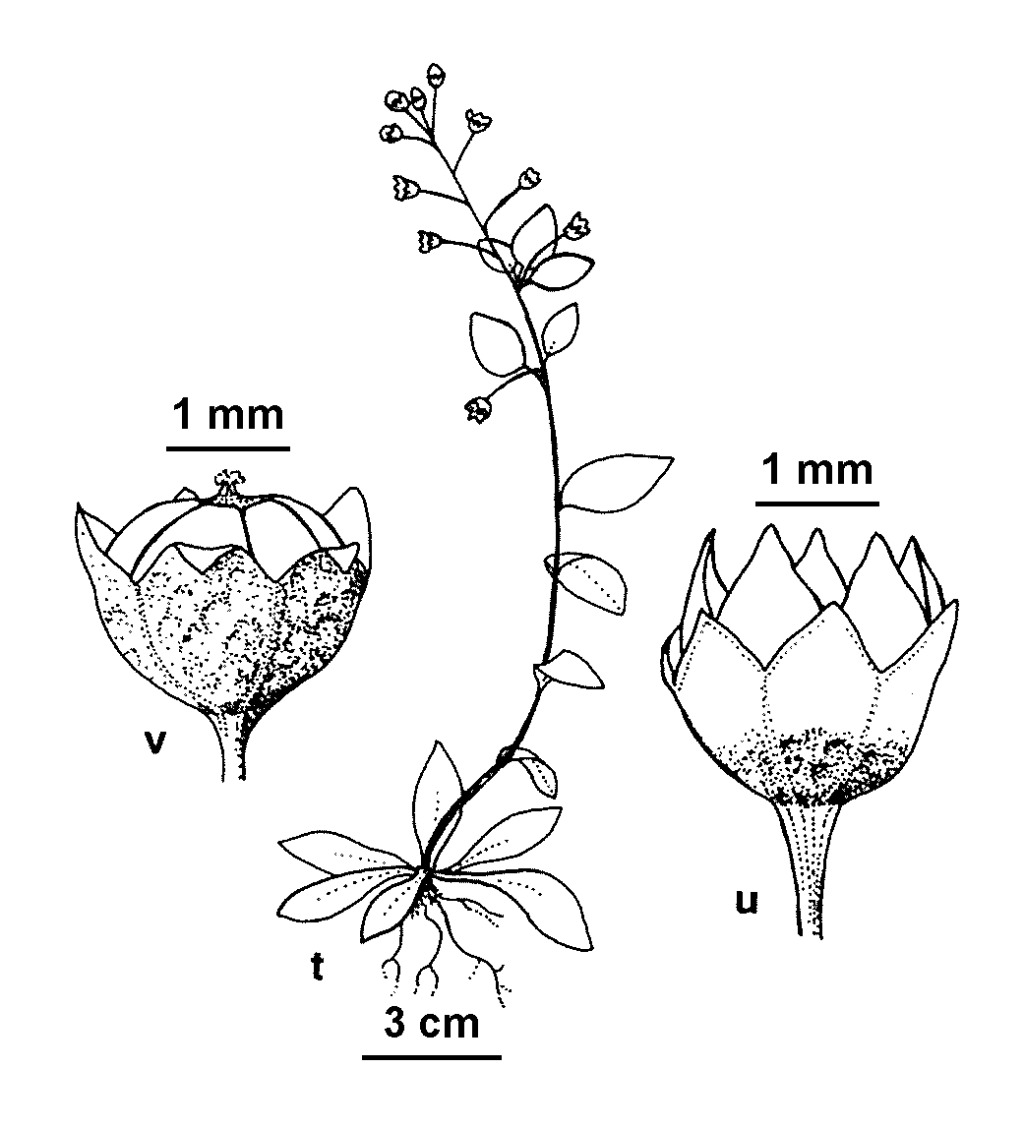Samolus valerandi
L. BrookweedTender, ± rosetted, glabrous perennial (?or annual), to c. 20 cm high. Leaves cauline and basal, ovate, elliptic or obovate, shortly petiolate, 1–4 cm long, 8–20 mm wide, thin-textured, light green, apex rounded. Flowers in an elongating leafless raceme, to c. 12 cm long; pedicels slender, to c. 1 cm long, each with a linear bract c. 1 mm long shortly below midway; calyx hemispherical, 1–1.5 mm long at anthesis (rapidly enlarging to c. 3 mm in fruit), lobes broadly acute or obtuse, one-third to half as long as calyx; corolla lobes blunt, spreading, exceeding calyx by c. 0.5 mm, free shortly above base, white; stamens and staminodes inserted at throat of corolla. Capsule c. spherical, c. 2 mm diam. Flowers mainly Nov.–Mar.
VRiv, GipP, EGL, EGU, HSF, HNF. WA (naturalised), Qld, NSW, ACT. Europe, Africa, North and South America. Relatively rare in Victoria, occurring on damp, often shaded banks of lowland streams in the east (e.g. Dargo, Bruthen areas, upper Snowy and Genoa Rivers, etc.).
 Spinning
Spinning

